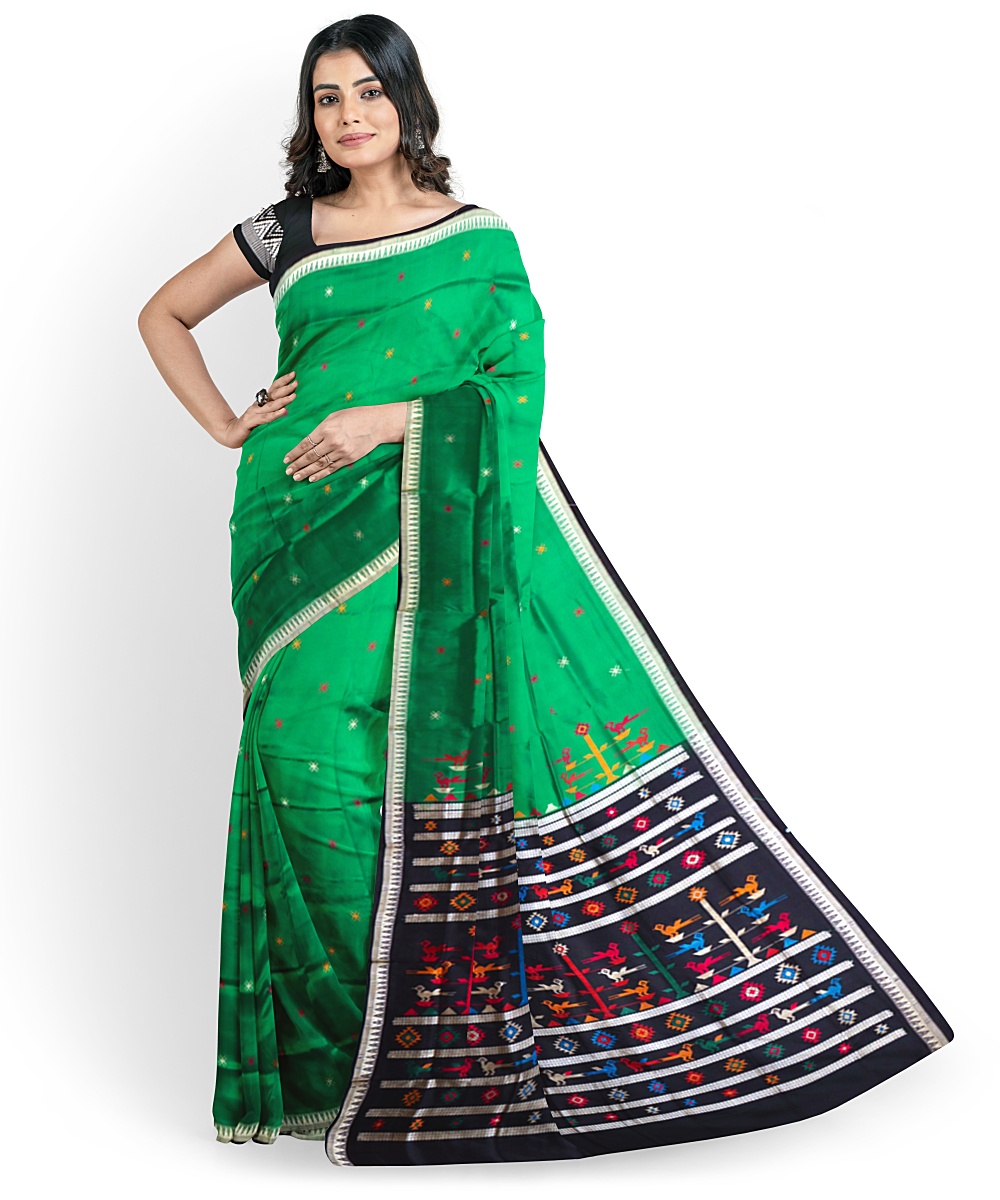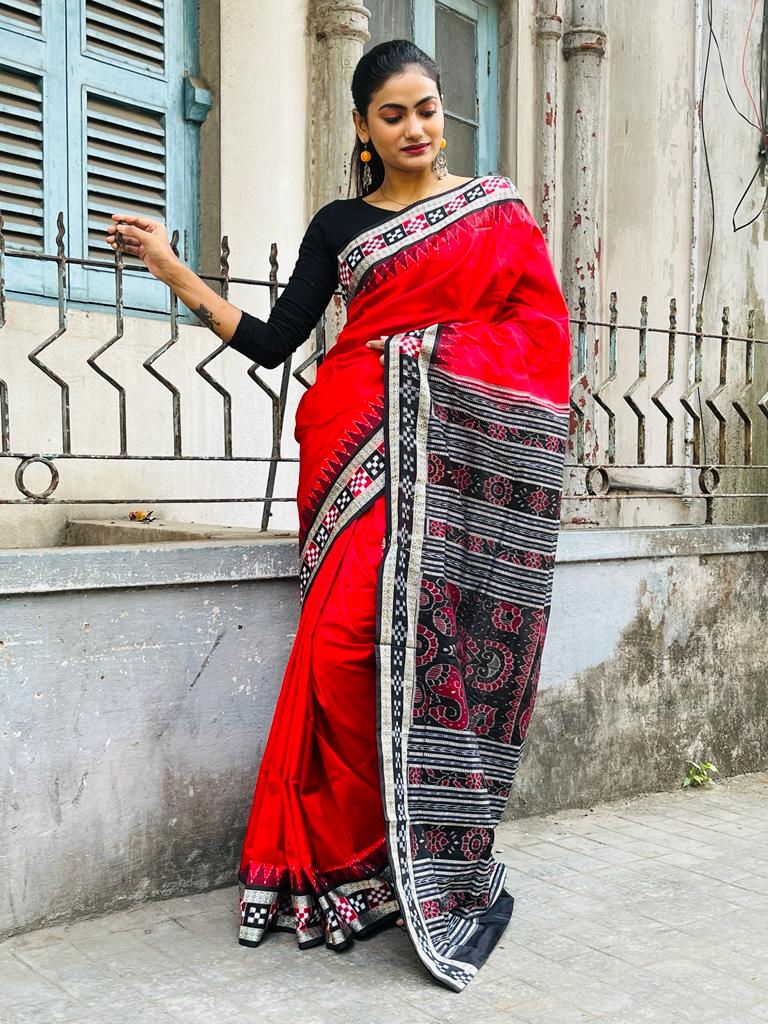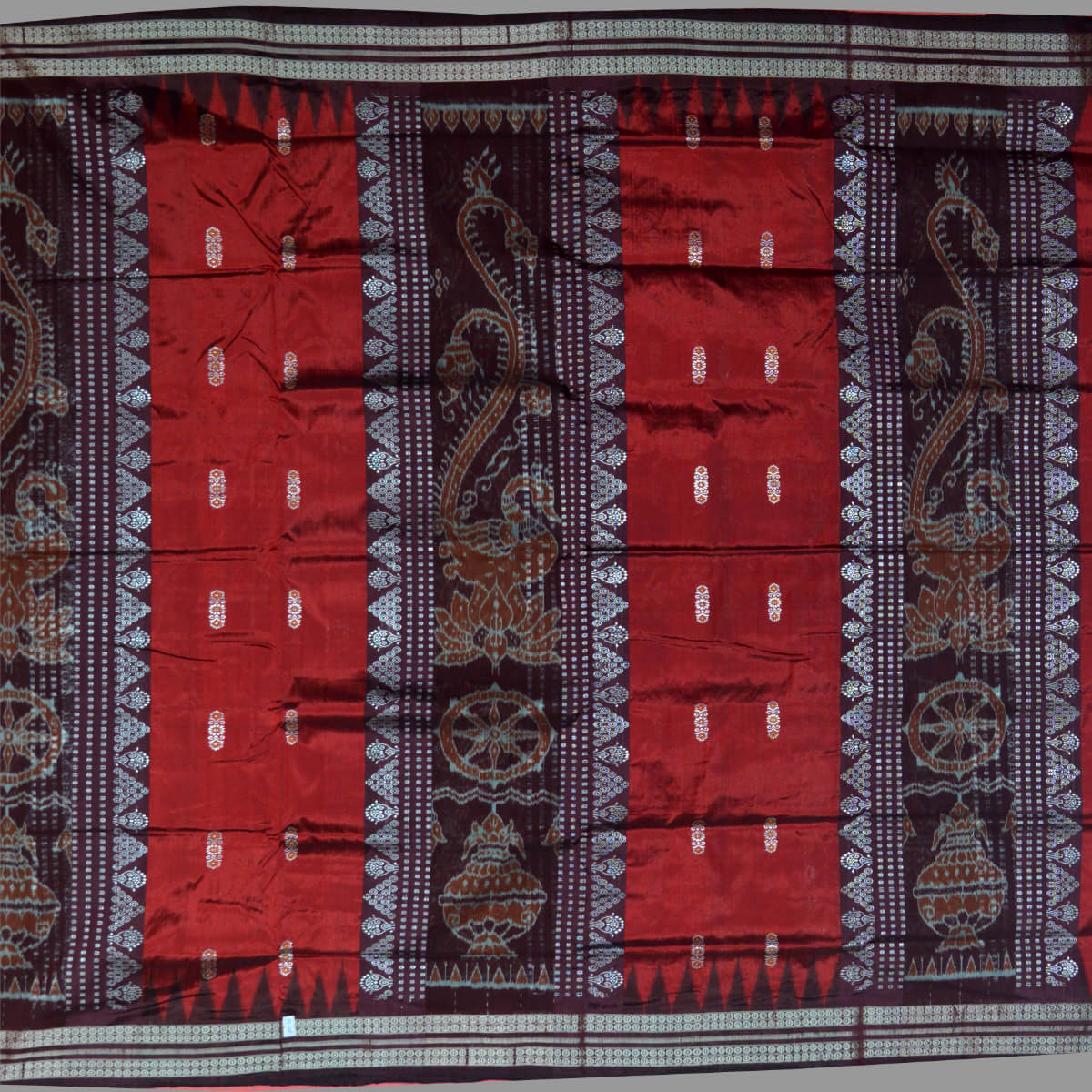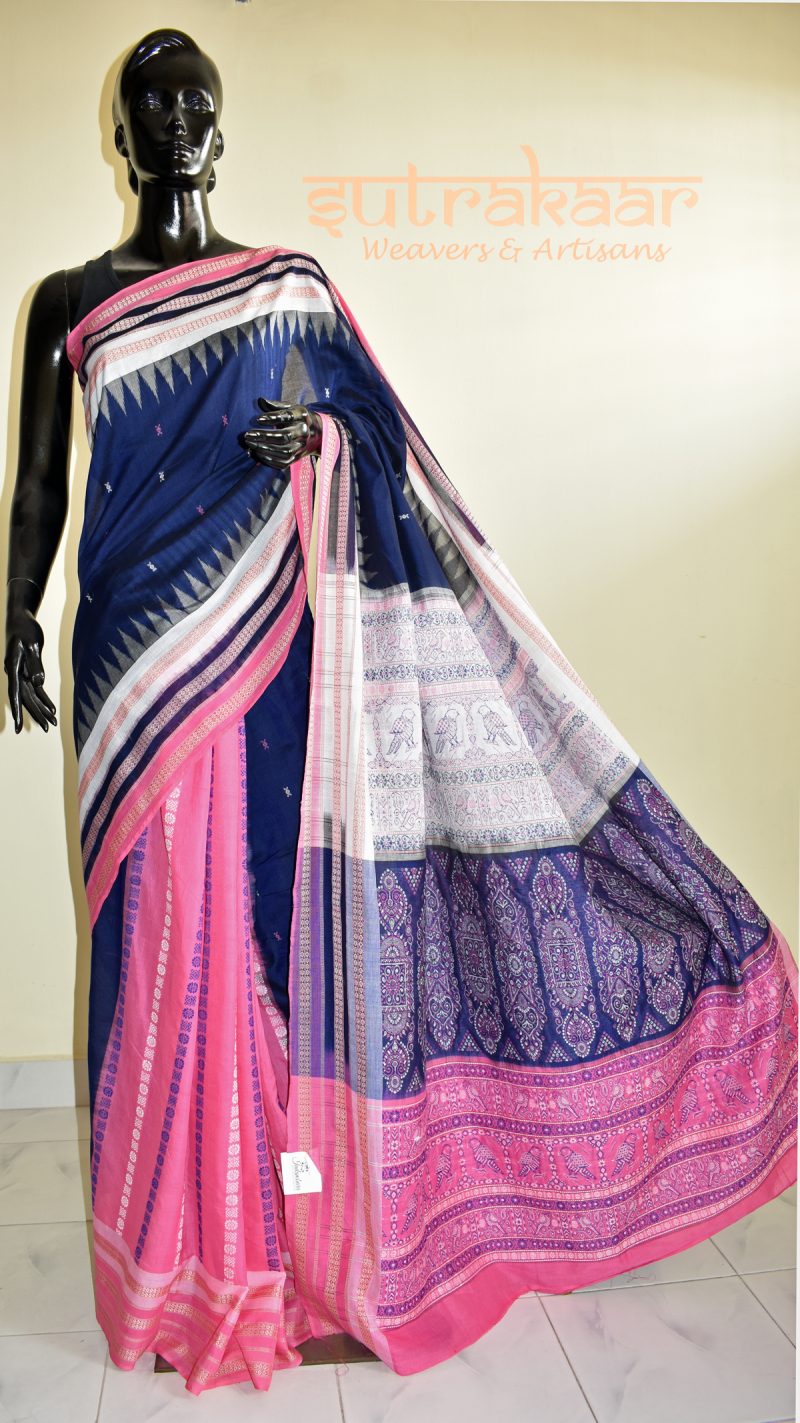
Sambalpuri Sarees Its Varieties And Style Tips For You Utsav Fashion Blog
[1] Sambalpuri saris are known for their incorporation of traditional motifs like shankha (Conch), chakra (wheel), phula (flower), all of which have deep symbolism with the native Odia culture. The colours red, black and white represents Lord Kaalia (Jagannatha)'s face colour.

Sambalpuri Pata Saree in Red Color & Flower Bomkei with blouse Piece Koshali Arts & Crafts
Description Bomkai - Modern in Design with Traditional Tinge [4] Bomkai cotton sarees are mostly accepted for habitual wear and the silk sari is put on ceremonies and sacred occasions. Most of the stylish saree are embodied with captivating color to give the gracious look to the woman wearing the saree.

Sambalpuri Sarees Its Varieties And Style Tips For You Utsav Fashion Blog
1. Assam Silk Sarees Every woman has a dream to have one Silk Saree of Assam in their wardrobe because of its delicate and lightweight features. Also, Its silk is always popular since ancient times. Moreover, Its silk is driven by three major types of wild silks, which are produced in Assam -golden Muga, white pat/part, and warm Eri silk.

Yellow sambalpuri Bomkai silk saree Boyanika Odisha
A pasapali pata saree is a type of handloom saree made of pure silk and embellished with intricate designs and motifs. Pasapali pata sarees are also known as bomkai sarees because they originate in the Bomkai village of Odisha's Ganjam district.

Green Bomkai Sambalpuri silk saree Boyanika Odisha
Types of Handloom Textiles Sambalpuri Ikat: The sarees of Sambalpuri are among India's most beautiful sarees. West Odisha produces these kinds of sarees, primarily in the areas of Sambalpur, Bargarh, Boudh, Balangir and Sonepur. The Sambalpuri Sarees are handwoven from every single thread.

Blue Colour Pasapali Border Sambalpuri Handloom Bomkai Silk Saree
Also known as Sonepuri the embroidered cloth is a type of saree that was first crafted in the southern coastal parts of Orissa. Undoubtedly then, the fabric carried an essence of the ensembles that originated on the shores. While most of the coastal areas of Southern Orissa are involved in the creation of Bomkai sarees, it is in Sonepur that.

Sambalpuri silk Bomkai saree.. from Odisha looms
The saree comes in various varieties such as Sonepuri, Pasapali, Bomkai, Barpali, and Bapta saris, named after their places of origin. Local women wear the Sambalpuri saree for traditional functions, marriages, pujas,. Difference between Katki and Sambalpuri saree. Having gone through the information provided above,.

Bomkai bandha Sambalpuri silk Saree Swadeshi Dhaaga स्वदेशी धागा
This saree gives you a charming and alluring look. Tribes India brings this elegant hand-woven sambalpuri bomkai saree (with blouse piece) in fine quality fabric and an alluring colour by the tribal artisans of Odissa.This beautiful saree is a classic handwoven masterpiece. It is endlessly elegant and rich and has a pure traditional touch to it.

Difference Between Bomkai and Sambalpuri Saree Fullitejas
Sambalpuri Saree is a traditional handwoven ikat or sari or saree (Locally called sadhi) wherein the twist and the weft is coloured before weaving. It is delivered in the Bargarh, Sonepur, Sambalpur, Balangir area, Boudh District of Odisha.

Sambalpuri Bomkai Saree Sutrakaar Celebrating Handloom Sarees.
Variety of Sambalpuri Sarees. Some common varieties include Sonepuri, Barpali, Pasapali, Bapta and Bomkai, all of which are named after the area or town where they are produced (or rather, where they have been produced for many years). Each of these types varies on the basis of a number of factors such as which type of fabric is preferred.

Saree Sambalpuri Bomkai Tribes India
The Sambalpuri Sarees are hand-woven and a typical saree takes up to 2-3 weeks to weave. Depending on the design, some sarees can also take up to 5-6 months to get completed. The weavers first create the design on a piece of paper, then form the design and tie the different patterns. The tied cloth is then dipped into boiling colors.

Silk Formal Wear, Wedding Wear Maroon Sambalpuri Bomkai Saree at Rs 5700 in Bhubaneswar
The difference between Bomkai and Sambalpuri sarees is related to their origin and design. Bomkai sarees belong to Bomkai and Sambalpuri sarees hail from Sambalpur. Besides, Bomkai sarees have Zari-work. In contrast, the Sambalpuri sarees have Bandhkala work. How Do You Identify a Bomkai Saree?

Yellow Colour Sambalpuri Handloom Bomkai Silk Saree
Handloom Maroon Black Boita Bomkai Silk Saree. ₹12,700.00. New. Quick View. Bomkai Saree. Maroon Black Bomkai Cotton Saree with Ikat Pallu. ₹3,850.00. Discover the beauty of Bomkai Silk Saree, a traditional Indian handloom saree known for its intricate designs and vibrant colors. Explore our collection of Bomkai sarees available for online.

Yellow and Sky Blue Bomkai Sambalpuri silk saree Boyanika Odisha
Bomkai saree' s uniqueness lies in the contrast between the plain or minimally patterned body and the lavish threadwork on the pallu. The skilled weavers pour their creativity into crafting captivating designs, often depicting traditional motifs inspired by nature, folklore, and temple art.

Maroon Sambalpuri Bomkai Saree
What is the difference between Bomkai and Sambalpuri saree? Origin and style are what set Bomkai and Sambalpuri sarees apart from one another. Bomkai sarees also include elaborate Zari embroidery. Sambalpuri sarees, on the other hand, include elaborate Bandhgala embroidery. The patterns of Bomkai sarees are inspired by those seen in Ikat textiles.

Saree Sambalpuri Bomkai Tribes India
#Sambalpuricollection #sambalpurisaree@sambalpurisaree SUBSCRIBE TO SUPPORT USWhatsapp group Link :- Customer group :::-1https://chat.whatsapp.com/FH02SuaP32.